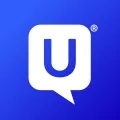
A comprehensive guide to in-depth interviews (IDIs)

You might have user data. But do you fully understand the why behind the data? Do you know who they are as people? If the answer is no, you're not alone.
A 2019 study found that more than half of researchers would like to use more in-person interviews as a UX research method. The good news? Most people are actually willing to give you their undivided attention to actively improve your app, site, or service user experience. As a UX researcher, you’re sitting on a potential goldmine of information and insights from your customer base.
To pull that insightful data from participants, you’ll need to conduct in-depth interviews (IDIs). These interviews require more planning and resources than other data collection methods. You’re also asking for more of your user’s time.
For those reasons, it's essential to ensure you go into the process with a clear idea of what data you hope to get out of one.
What is an in-depth interview?
An in-depth interview is a qualitative research technique that involves conducting multiple individual interviews. They involve one-on-one engagement with participants, usually taking place face-to-face, either remotely or in-person.
Unlike other research methods, in-depth interviews have a more flexible structure than moderated usability studies.
IDIs are used to get a more detailed and well-rounded perspective of users’ opinions, experiences, and feelings about a product's UX.
Instead of more general qualitative or quantitative questionnaires that are sent out to a larger group of customers, IDI questions can be tailored to the interviewee and their individual usage.
In these more intensive interviews, organizations usually ask a smaller number of customers to take part. This means that responses to different ideas, features, services, or future plans are more deeply investigated.
You could consider using in-depth interviews for the following reasons:
- To get feedback on a new product or service your business has launched
- As a way of understanding the needs and expectations of your customers during persona gathering sessions
- For coming up with new ideas on how customers would make improvements to an existing product or service
- Following a usability study to better understand how users intend to use your platform
- To get insight into how a customer thinks about design elements on certain pages
As you can see, they’re most effective when used in combination with other research methods like online surveys and usability testing.
Why are in-depth interviews important?
There’s a large gap between the consumer's experience of brands and the marketer's confidence in their own branding. While most marketers are confident they can meet their target market's level of expectation, just under half of consumers say brands fail to meet their expectations.
Most users will switch to a competitor if they have just one bad experience with a brand they typically like.

What does this mean? To put it simply: creating a positive user experience is key for encouraging people to interact with your app, service, or site.
In-depth interviews are one way of bridging this gap between consumer experience and business confidence. You can get insight into a users’ thoughts and feelings—and use that qualitative data to improve design, product launches, and key messaging.
What are the benefits of performing in-depth interviews?
IDIs should show you how users feel about specific elements of your UX. They can also help you gain confidence in making future decisions.
Here are a few of the top benefits of using IDIs in your UX process.
Smaller sample size
Given the higher quality relevant insights, researchers require fewer participants to take part in in-depth interviews.
Lower drop-off rates mean that interviewers can conduct fewer IDIs and still collect rich data. For instance, online questionnaires have a higher drop-off rate, so they require a larger sampling. But with IDIs, you can get a lot of data from each individual participant.
Get honest feedback
One-on-one in-depth interviews are free from possible peer-pressure dynamics or distractions that are sometimes present in larger focus groups. By taking an hour to chat with a participant directly, the two-way conversation leaves zero space for other users’ influence.
Some people may also feel more comfortable providing honest feedback in conversation instead of through a written questionnaire.
Gain a deeper understanding of user behavior
Face-to-face in-depth interviews, whether remote or in-person, allow researchers to interpret body language. Interviewers can also analyze changes in tone of voice and word choice.
These nuances help interviewers build a complete picture of user behavior that isn’t possible through other online or offline feedback channels.
Build a stronger understanding of user expectations and motivations
It’s easier to ask follow-up questions, request more detailed information, and explore particular topics in more depth with an IDI. They’re suited to asking open-ended questions that encourage longer and more detailed responses from the participant.
As a researcher, you should take advantage of having participants’ undivided attention. Take the time to explore their opinions more deeply, beyond the surface level, for the most useful qualitative data.

What are the challenges?
IDIs can give you valuable insight into users’ expectations and actual uses of your site. But, there are some challenges.
They’re time-consuming
Every interview you conduct will need to be transcribed, analyzed, organized, and properly stored. Multiple team members may need to be involved in the process.
While often more informative, IDIs require more time and preparation than other research methods—including simple written surveys.
Interviewers or moderators require thorough training and briefing
You need skilled interviewers to ask the right research questions and properly engage with participants to obtain valuable insights.
Successful IDIs depend on an interviewer's ability to ask thoughtful questions at the right time. They need to give the participants space to think and talk—while making them feel comfortable enough to do so. It takes training for an interviewer to hone in on this skill set.
Participants require careful vetting
To gather valuable and balanced insights, it’s essential to use random sampling to gather a group of participants that accurately represent your organization’s user base. Once you have a random set of participants, you should check that they represent your user base’s different groups.
Depending on the size of your customer base, it likely won’t be possible to interview all your customers. That being said, it's important to interview a variety of different users.
For instance, you may want to interview a group of users who are unfamiliar with your site design, those who have been using your site for six months, and another group who left for a competitor.
The best way to do this would be to segment your customer base, then randomly generate a sample of participants to invite to an IDI.
How do you structure IDIs?
When it comes to how structured your IDIs are, you have several options:
- Structured interviews are fixed in their methodology. The interviewer would only ask predetermined questions and target specific experiences. A structured approach limits the scope for exploring discussed topics in more depth.
- Unstructured interviews aren’t defined and don’t include pre-planned questions. It’s more like a conversation between the researcher and the respondent.
- Semi-structured interviews follow some protocols to guide the process. While it’s a conversation between two individuals, and the interviewer can ask for more details, most of the questions are scripted. Interviewers will plan some initial questions and themes to cover, but allow the respondents’ answers to guide the interview direction.
Generally, the most valuable in-depth interviews are semi-structured.
These IDIs have a loose structure, but remain adaptable to the participant’s issues and ideas. This flexibility enables interviewers to explore each response fully and better engage with the user.
When to use unstructured interviews:
"If you’re at the beginning of a design phase, just trying to path-find for innovation, or trying to really dig into another layer of how your users use your product, that's when you're going to want to be more unstructured. When you've already got the product or the prototype, and you're wanting to validate, and you want to make sure that you're designing it the right way."
- Julie Strubel, UserZoom Senior UX Researcher
How do you conduct a good in-depth interview?
Some preparation is key for conducting an insightful in-depth interview. Planning topics and conversation starters in advance will help you use your participants’ time more wisely. If your customers feel that their time was wasted or the IDI was simply too long, they may be reluctant to participate in future drives for customer insights.
Keeping your IDIs brief and well-structured will also help your participants maintain focus until the end. Longer interviews with less clear objectives run the risk of tiring customers out and reducing the quality of their answers.
In addition to the tips we just mentioned, we've pulled together 9 best practices to keep in mind when you're running IDIs:
- Know your aims
- Define your scope
- Set a time limit
- Ask the right questions
- Remove bias
- Make questions actionable
- Test your questions
- Create an IDI guide
- Put your insights into action
1. Know your aims
Before you plan on conducting any in-depth interviews, it’s important to know what you’re aiming to get out of the process. This helps guide your questions—and ultimately, the conversation.
Perhaps you’re looking to understand how customers feel about your site’s new design. In that case, you need to ask open-ended questions like, “What do you think of our new site design when compared to our previous version?”
If you want to find out if participants find your checkout page to be intuitive, ask questions like, “How did you feel about the navigation experience of our checkout page?”
When you identify your goals, it’ll be easier to plan questions to help build your understanding of what your end-user is looking to achieve.
For this reason, Hector Harris-Burton of Imaginaire recommends having some structure.
“Have a loose structure so that you can cover topics that you'd like to hear about. While an IDI is supposed to be a freeform conversation, one of the best ways to get the most information out of the interviewee is to ensure that you have talking points and some kind of structure.
By having a structure, not only are you able to cover the topics you need, but you can also aid the conversation. No matter who you talk to, there is always the potential for the conversation to run dry. But with a structure and talking points, you're able to lead the conversation and move forward, rather than struggling.”

2. Define your scope
Always clarify the extent of your research before you begin interviewing people.
Decide how much time you have to spend on conducting IDIs, and the minimum number of respondents you need to consider any themes as standard. That should define the number of users you need to interview.
There’s no magic number when it comes to determining the size of your sample. Always prioritize quality over quantity, and check that you can spend a reasonable amount of time in each interview.
For instance, there’s not much point in interviewing 120 people for five minutes each. It would be better to spend the same amount of time interviewing 20 people for 30 minutes each. That way, you’d have time to explore topics more deeply with each participant instead of rushing through a list of questions.
3. Set a time limit
When conducting an IDI, make sure you’re mindful of your participants’ time. Remember: their answer quality may drop off towards the end of the conversation if you’ve been talking for hours.
Let participants know how much time each interview will take and stick to it.
Keeping each interview to a maximum of one hour will allow you to ask participants plenty of questions without going off-topic. It’s also short enough for them to commit to the interview.
4. Ask the right questions
Asking the right questions will encourage respondents to share their honest points of view.
In your in-depth interviews, add in a mix of question types, such as:
- General ice-breaking questions. Ease people into the discussion by asking light-hearted questions first. For example, “Tell me about your biggest challenges right now.”
- More specific detail-oriented questions. Start to explore subjects that are more closely linked to your research goals. For instance, “What are you hoping to achieve by using our app?”
- Insight-based questions. Ask more specific questions about existing or new features. Use your last questions to find out how users feel about your future plans. For example, “How useful would this new calendar function be for you?”
Using the right questions will help you better listen to users and then effectively implement their feedback. You’ll also gather qualitative data that helps you make smarter UX decisions.
5. Remove bias
It’s easy to accidentally influence customers’ answers without intending to. Take care with how you phrase each of your questions to make sure you’re not accidentally influencing their responses.
Consider the following question: “What do you like about this new service?”
The phrasing of the question restricts users to only talking about what they like about the service as opposed to providing a more balanced answer.
To make the question more neutral and bias-free, ask something along the lines of: “What do you think about our new service?”
This simple change of phrasing leaves the customer free to provide an honest perspective (as opposed to just listing what they like about the service).
The key is to collect valuable, actionable feedback that isn’t shaped by your organization’s expectations or agenda. So, always ask users open-ended questions and avoid leading questions that influence participants’ answers.
Read up on other examples of leading questions so you know what to avoid.
Don't ask them leading questions designed to elicit a certain response. You want them to answer truthfully, so it's best to ask questions straight up and don't suggest an answer.
For example, avoid questions like “What do you think is helpful in the new package we offered? The new payment methods?” Ask open-ended questions that will lead to expansive responses.
Remember, you want to find out what they are trying to do and what their problems are.
- Lauri Kinkar, Messente CEO
6. Make questions actionable
When conducting IDIs, only ask users questions that are actionable. That way, you’ll be able to directly use their answers to improve user experience.
Here’s an example of an actionable question: “Is there anything you would change about our checkout page?” Any answers you receive to this question will improve your current page based on users’ current sentiment around it.
If you’re in doubt about asking a particular question, think about whether you could use the answer to improve your UX. If you can’t find a way of using the response to improve your user experience, it’s best to ask another question.
7. Test your interview questions
Test your questions on teammates and ask for feedback on whether your questions are straightforward.
Do they give the answers you were expecting? Or bounce the questions back to you, asking what you meant?
Your users’ responses should give you a clear idea of what needs to be changed or improved moving forwards.
8. Create an IDI guide
IDI guides are an informative document that outlines the interview process from start to finish.
It should act as a to-do list that you refer to throughout the interview process, as UX Specialist Andreas Johansson explains:
"As part of the user research plan, I also create an interview guide. This is basically a rough structure for me to refer to when I do the interviews.
I tend to do semi-structured interviews. That means that I refer to the interview guide if I get stuck, but I don't tend to be too rigid about it. Sometimes it's good if the discussions go off on a tangent, for instance."
First, state your objectives and then outline the general flow of the interview. Include all the topics you want to talk about and in what order—remembering why you’re asking them in the first place.
This interview guide will stop you from getting side-tracked during the conversation, helping you create the best possible experience for your participants.
Consider giving your colleagues a copy of the IDI guide, too. They can provide you with feedback on what you’re planning to ask. Knowing what insights you’re planning to pull will also help them anticipate the data they’ll later analyze and store.
9. Put your insights into action
It’s all well and good to have a jam-packed day of IDIs. Once you’ve collected that data, though, you need to turn it into actionable insights.
Olga Kimalana, Senior Conversion Strategist at Scandiweb, explains:
“There’s no point in conducting user interviews if you don’t act upon the insights you gathered, so make sure to present your insights and plans of action to stakeholders to kick off the improvements.”
The simplest way to do this is to listen back through each interview. Create a transcription of the conversion, and flag different parts of the conversation that are interesting. This can include snippets you want to re-listen or pay closer attention to.
We recommend using a professional UX platform (instead of Zoom or Google Meet) for this reason. UserTesting, for example, has a note-taking feature. You can annotate transcripts, and add hashtags to certain topics, to spot themes across several IDIs.

Five in-depth interview best practices
Following a few best practices will ensure you make the most of each interview and collect data for improving your UX. Here are five to start with.
1. Ensure participants feel comfortable
In-depth interviews are voluntary, so it’s important to make customers feel comfortable enough to share their honest opinions.
As an interviewer, you should approach each interview with an approachable, friendly, and open-minded attitude. Avoid making the interview feel too formal–you don’t want users to feel under pressure or stressed.
"You're setting the stage, you want people to feel relaxed. Even if they're just going through and doing a talk-out-loud for a usability session, you want to put them at ease, and that's not just about reading the script. It's about making that human connection in the first three minutes."
- Julie Strubel, UserZoom Senior UX Researcher
If customers have a positive experience during your interview, they’ll be more likely to readily offer feedback if you request it again in the future. You’ll also get better data from respondents who were genuinely interested in the conversation.
2. Properly engage with your interviewees
Effectively engaging with interviewees is sometimes easier said than done—especially when you have a busy day full of in-depth interviews.
Taking detailed notes may distract you from what your customer is saying or take you out of the moment, so you may want to use an audio or video recording device instead. That way, you can give your interviewee 100% of your attention and remain responsive to their answers.
Making recordings of each interview will enable you to fully engage with participants without worrying about forgetting critical data or insights later on. Simply refer to your recordings afterward and collect all of the relevant insights.
3. Follow-up on user responses
It’s vital to understand what your customers mean by their responses and what’s behind their opinion of your app, site, or service. Try clarifying their responses by summarizing their thoughts. If you’re not sure, always ask for clarification.
Whenever users share an opinion, follow-up on their response by asking why they feel the way they do.
For instance, if a participant says they don’t find your checkout page intuitive, you should follow-up by asking them what it is that they don’t find user-friendly. Is it the layout? Are the payment instructions unclear? Do they have to click on too many buttons?
Avoid putting words into participants’ mouths, but make sure to find out what it is precisely about the page they find unintuitive.
Alternatively, if a user says they prefer your old site design, make sure to pinpoint why. Was there a specific menu flow they found easy to use? Was the search capability stronger?
Asking why will help you go beyond surface-level responses and genuinely engage with your customer base.
4. Provide consent forms
You should always provide your participants with consent forms that outline the purpose of the interview.
To legally use the participants’ responses and details, you need to make sure that everyone signs an agreement as to how the information gathered from the interview will be used.
Consent always needs to be:
- Based on clearly explained information. Participants need to know what exactly is being researched. Provide a detailed information sheet for them to read before signing.
- Given freely. Consent can’t be dependent on receiving a benefit. If you plan on offering incentives, make sure you do this before asking for consent.
- Given separately from other information. Consent forms need to be given separately to an NDA form, for example.
- Given for a specific purpose. If you plan on using the research in multiple ways, consent needs to be given for all of them.
- Able to be refused and withdrawn. The interviewee needs to know how they can withdraw consent at any moment during the process.
5. Say thank you
Participants are giving up their time to share their opinions and perspectives on your product or service with you. Make it a priority to thank your customers for their time, so they feel appreciated.
You could also provide incentives as a way of saying thank you to participants. For example, you could automatically enter participants into an Amazon gift card giveaway.
Michael Margolis, a UX research partner at Google Ventures, offers different incentives depending on the customer type:
“I typically offer a $100 gift card for customer interviews. [...] Some people may be enticed by a larger “honorarium” or charitable donation made in their names. But experts often respond more to professional incentives, such as sharing a version of the research results, previewing a new or advanced technology, or giving them credit in a public way.”
Conduct more insightful IDIs today
In-depth interviews are a great source of original user insights as part of a broader UX research process.
When planned and conducted correctly, IDIs make it easier to understand your users’ expectations and pain points. Unlike other qualitative data collection methods, you’ll be able to interact with users directly and dig deeper into how they feel about your UX.

Watch a demo
See how easy it is to get fast feedback on a website, prototype, design, or more in this demo.





